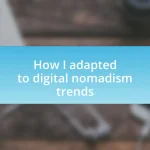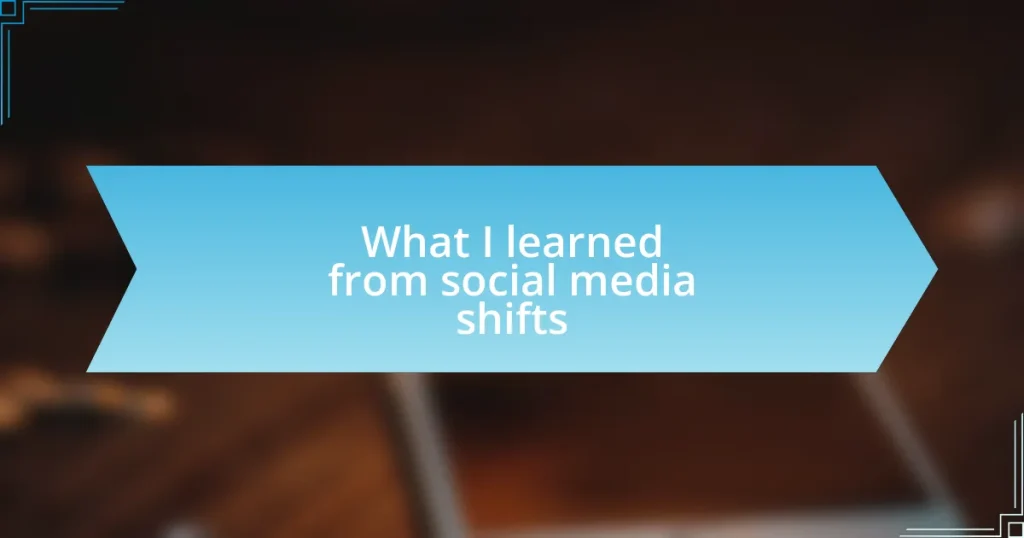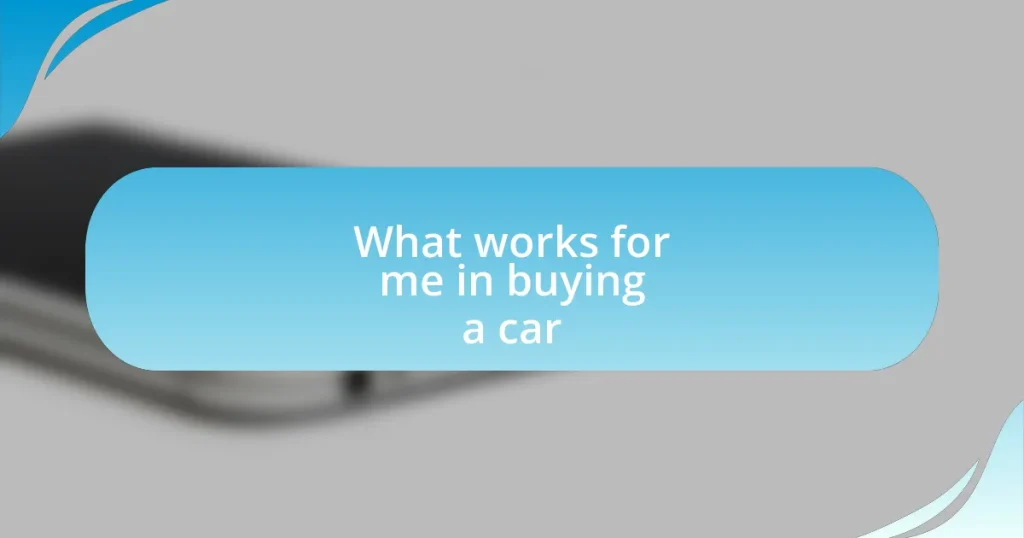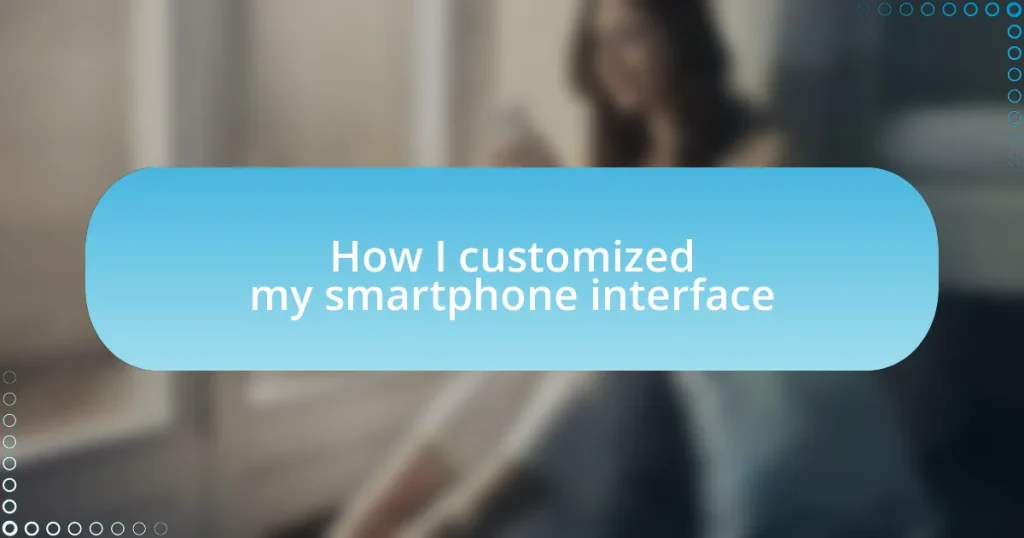Key takeaways:
- Social media has a significant influence on opinions and behaviors, requiring users to be critical of content shared and consumed.
- User behavior is shifting towards authenticity and short-form content, pressuring brands to engage promptly with their audience.
- Leveraging analytics is essential for understanding audience preferences and tailoring content effectively, leading to better engagement and growth opportunities.
- Future trends in social media will likely include immersive technologies, increased focus on privacy, and the rise of niche communities, demanding adaptability from marketers.
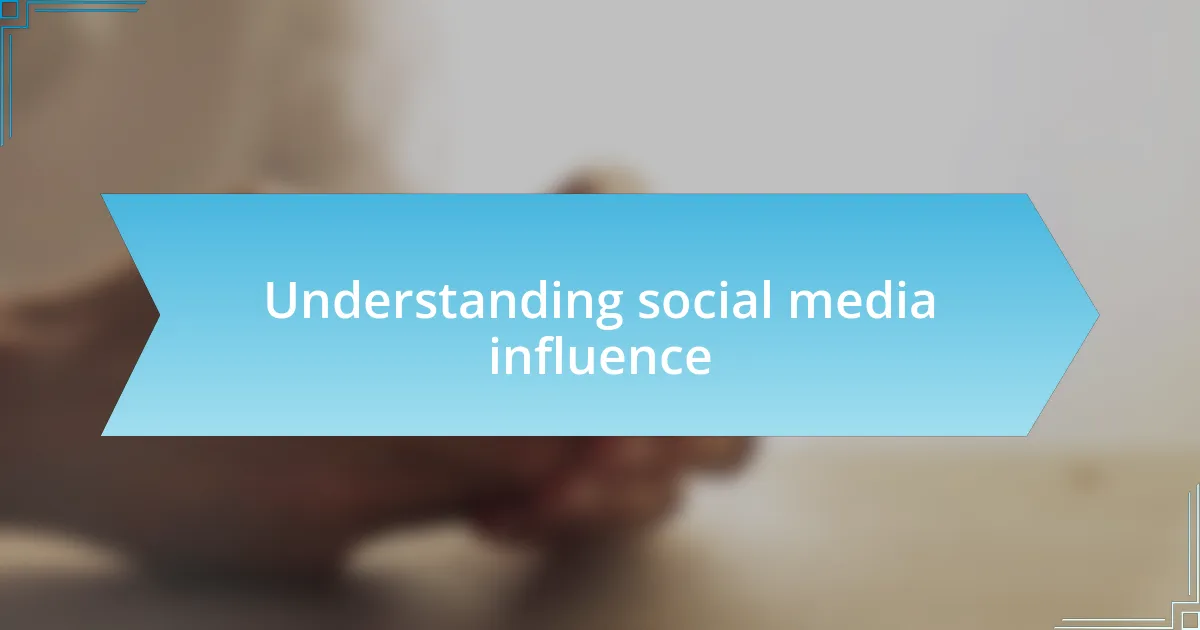
Understanding social media influence
Social media influence is an immense force that shapes opinions and behaviors in real-time. I remember scrolling through my feed one day and seeing a friend’s post about a local charity. It inspired me to get involved, showcasing how even one shared message can ripple through a community and ignite action. Don’t you ever wonder how a single tweet can spark a movement that resonates around the globe?
Understanding this influence also means recognizing the responsibility that comes with it. I once witnessed a viral trend that promoted self-love yet also led to some individuals feeling inadequate when they compared themselves to carefully curated images. It’s a reminder that while social media has the power to uplift, it can also present unrealistic standards—challenging us to think critically about what we consume and share.
Moreover, the algorithms that govern our feeds can create echo chambers, amplifying certain beliefs while silencing others. Personally, I’ve felt this tightening grip when engaging with content that aligns too closely with my views. It made me ask myself, how often do we step out of our digital comfort zones? Engaging with diverse perspectives is essential for fostering true understanding in an increasingly polarized world.
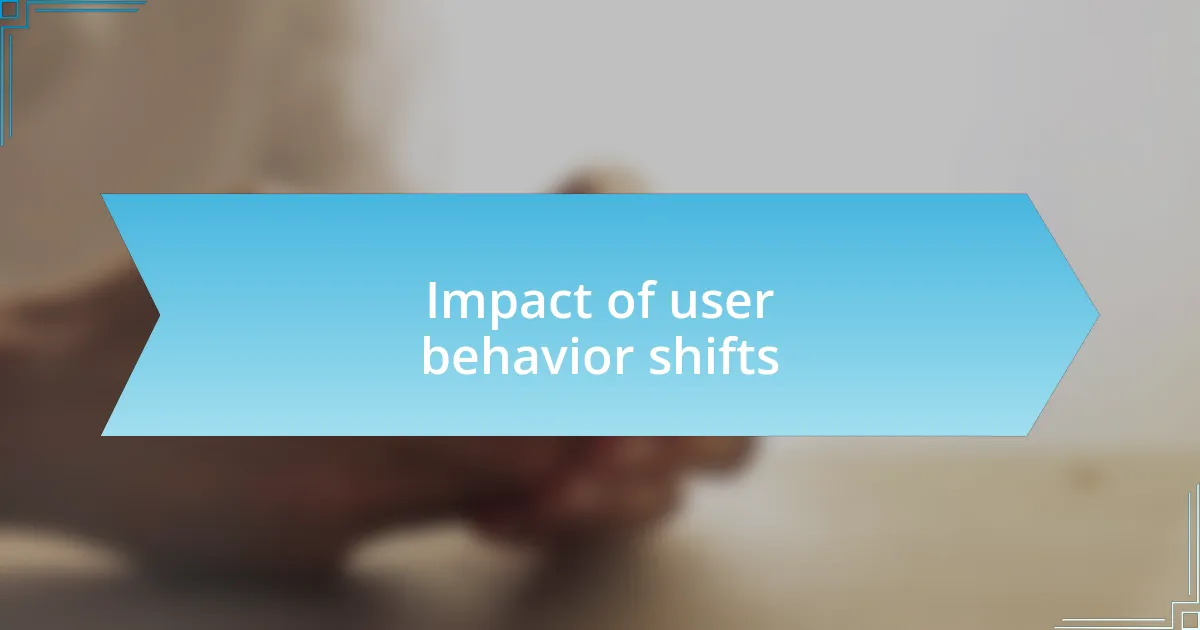
Impact of user behavior shifts
User behavior shifts on social media have drastically transformed how individuals interact online. I’ve noticed that people are leaning more toward authenticity rather than the picture-perfect portrayals of life. For example, when I began posting more candid moments instead of staged ones, I received more genuine engagement and connection, which made me realize how many others crave realness over curated feeds.
Another significant change I’ve observed is the rise of platforms that prioritize short, engaging content. This shift mirrors our decreasing attention spans; I myself often find it challenging to scroll past lengthy videos. It’s interesting to consider how brief, snappy content can have more impact than traditional, in-depth articles. I recall a time when a quick TikTok tutorial taught me a skill faster than an hour-long YouTube video ever could.
Moreover, the shift to mobile-first communication means users expect immediate updates and interaction. I’ve encountered situations where I had to respond to comments promptly, as the expectation for engagement has become almost instantaneous. This change forces brands and individuals to be more approachable and responsive, which can be both exhilarating and daunting. It begs the question: how prepared are we to adapt to this ever-evolving landscape?
| Behavior Change | Impact |
|---|---|
| Preference for Authenticity | Increased genuine engagement and connection among users. |
| Focus on Short Content | Users favor quick, digestible information over lengthy formats, impacting content strategies. |
| Immediate Interaction Expectations | Heightened pressure for brands and individuals to engage promptly with their audience. |
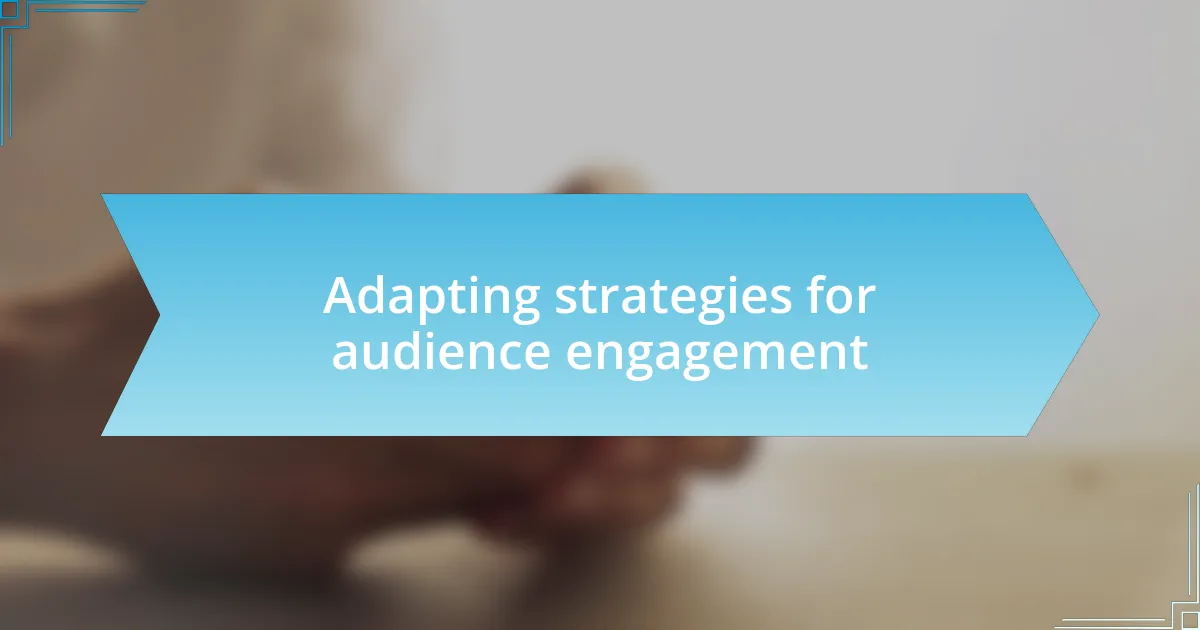
Adapting strategies for audience engagement
Adapting to the current landscape of audience engagement requires a keen understanding of what users truly value. In my own experience, I’ve found that incorporating interactive elements like polls or questions into my posts elicits a stronger sense of community. When I started featuring listener feedback in my stories, I noticed a significant uptick in engagement. It feels rewarding to see people express their thoughts and feel heard, creating a dynamic conversation rather than a one-sided broadcast.
To enhance audience engagement, consider these strategies:
- Emphasize Authenticity: Share unfiltered moments to foster genuine connections.
- Leverage Short-Form Content: Experiment with bite-sized videos or polls to capture attention quickly.
- Encourage Direct Interaction: Use features like Q&A sessions or live chats to invite real-time dialogue.
- Be Responsive: Prioritize timely replies to comments and messages, showing that you value your audience’s input.
- Personalize Content: Tailor your messages based on audience preferences and feedback to create a more relevant experience.
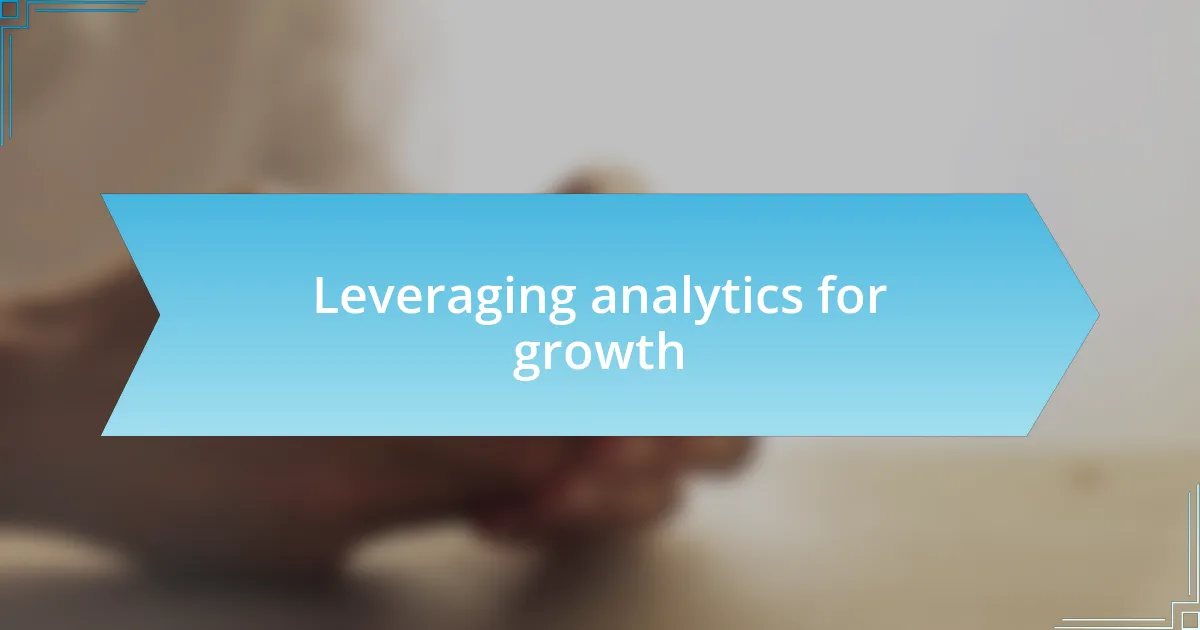
Leveraging analytics for growth
To truly harness the potential of social media, leveraging analytics is essential. I’ve observed that diving into the data behind my posts reveals which content resonates most with my audience. For instance, when I analyzed engagement metrics after a campaign, I spotted a surprising surge in interest for behind-the-scenes content. This insight helped me adapt my future strategies and cater to what my followers genuinely craved.
Moreover, understanding audience demographics through analytics lets me segment my content more effectively. I remember a time when I realized that a particular age group was engaging with my brand more than others. By tailoring my messages specifically for that demographic, I was able to cultivate a deeper connection. Have you examined who your audience really is? Trust me, knowing your audience’s preferences can unlock incredible growth opportunities.
Lastly, using tools to track engagement over time is invaluable for identifying trends. I once tracked my posting times and discovered that evenings significantly boosted views and interactions. It was a simple, yet effective adjustment. This analytical approach not only informs my scheduling but also keeps me ahead of the curve in adapting to my audience’s habits. Isn’t it fascinating how numbers can lead to real connections when applied thoughtfully?
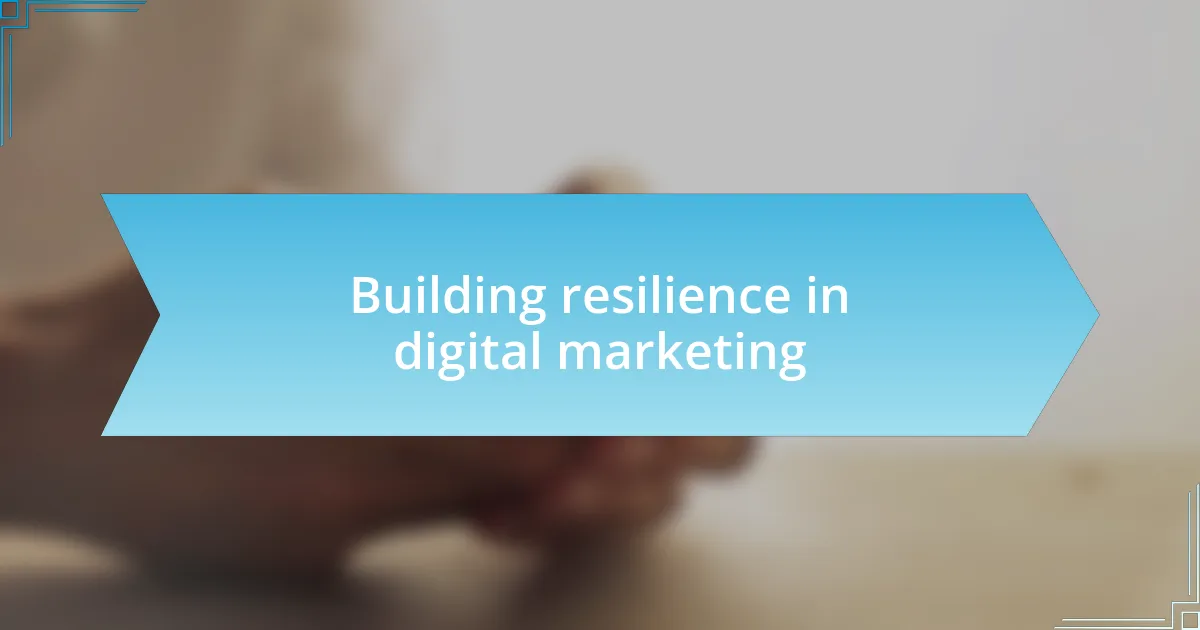
Building resilience in digital marketing
Building resilience in digital marketing requires a proactive approach to change. I learned this firsthand when a major platform algorithm shift threatened my reach. Instead of panicking, I reevaluated my strategies, focusing on diversifying my presence across various channels. This shift not only safeguarded my engagement but also enriched my overall marketing efforts. Have you ever felt that sudden urgency to pivot? It can be daunting, but it often leads to valuable insights and stronger foundations.
One challenge I faced was adapting to the increasing demand for authentic content. Initially, I struggled with balancing professionalism and personal storytelling. However, when I started sharing my own challenges and victories, I was amazed by how my audience responded. They appreciated the honesty, and it fostered a loyal community. This experience reinforced the importance of authenticity in building resilience, teaching me that embracing vulnerability can lead to deeper connections.
Moreover, staying updated with industry trends is crucial for resilience. I remember a period when video content began skyrocketing in popularity. Instead of dismissing it as a trend, I invested time in understanding video marketing strategies. It was a learning curve for sure, but the effort paid off. I encourage you to keep an eye on emerging trends; sometimes, the willingness to adapt can open doors to new opportunities that you might never have considered. How adaptable are you to changes in digital marketing? Resilience often begins with embracing the unknown.
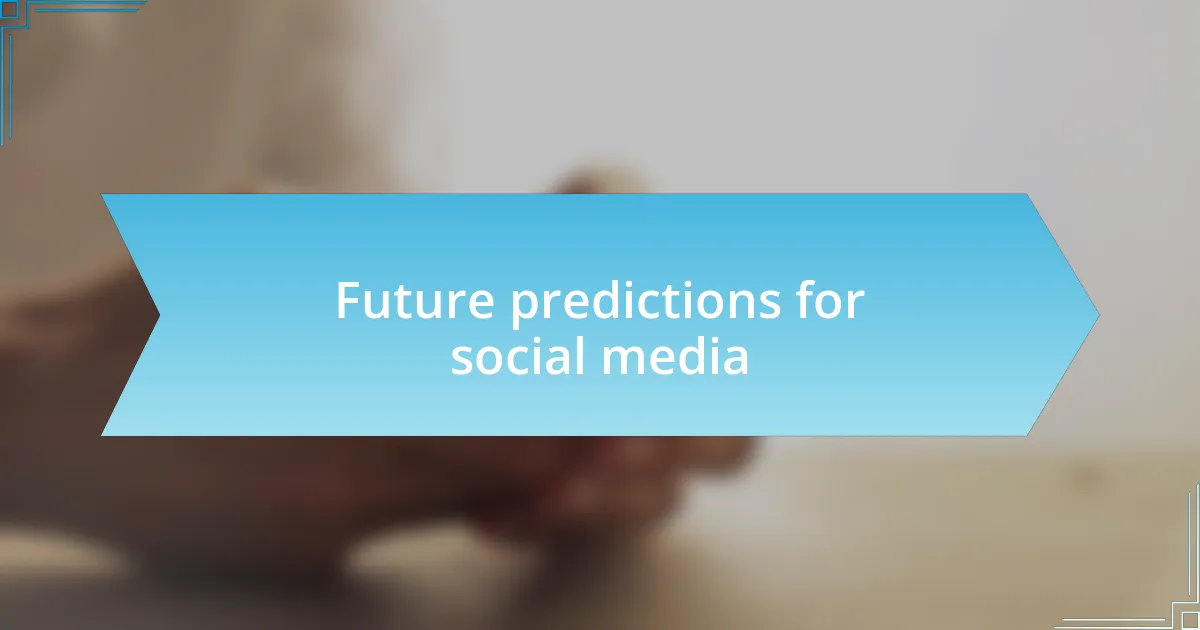
Future predictions for social media
When I think about the future of social media, I can’t shake the feeling that immersive technologies like augmented reality (AR) and virtual reality (VR) will become the norm. Imagine attending a virtual event where you can network with professionals in real time, all from the comfort of your home. This could reshape how we connect, making interactions richer and more engaging. Have you ever wished for a more interactive experience online? It might just be around the corner.
I’m also convinced that privacy will play a crucial role in shaping social media’s future. As users become more aware of their data rights, I foresee a growing demand for platforms that prioritize transparency and user control. Just a few months ago, I found myself carefully reviewing privacy settings on every app I use. This shift not only protects users but also builds trust—something that will be invaluable for brands in the coming years.
Looking ahead, I expect to see a surge in niche communities emerging on social media. I’ve experienced how powerful it can be to connect with like-minded individuals who share specific passions or interests. These micro-communities foster support and camaraderie, which can be incredibly fulfilling. Have you ever found a group that truly resonates with you online? This trend will likely encourage brands to engage more deeply and authentically, tailoring their messaging to resonate with these smaller, dedicated audiences.









